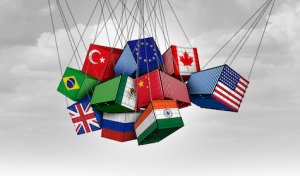The “liquidity” support provided by the Fed to megabanks through cross-border lending in fact acted as subsidies
Edward J. Kane died before he could finish a final book. But he had completed several chapters. Of course, he did not have a chance to revise or correct the manuscripts, though he worked several over repeatedly. We believe this one’s treatment of the roots of Federal Reserve programs that are, in effect, subsidies to financial institutions is brilliantly conceived and well-argued. We are, therefore, with the permission of the family, now issuing it as an INET Working Paper.
Its message can be summarized simply, using some language lightly adapted from the paper itself.
Despite Fed officials’ growing willingness to tell us about FOMC meetings and the interest-rate and price-level targets they generate, forms of Fed policymaking that have questionable distributional effects still take place in curtained areas. For example, one can find information on the Fed’s many separate bank rescue programs on Fed websites. However, a careful analysis of cross-program subsidized lending to giant US and foreign banks during the GFC (whose size is summarized in this INET Working Paper, Figure 6.1) is sorely needed. Taxpayers deserve to know not only the magnitude of particular credit flows but also the flow of day-by-day subsidies buried in the “liquidity” support that the Fed provided. To the best of my knowledge, a breakdown of the subsidy flow has never appeared in a Federal Reserve press release or special report.
The value and anti-egalitarian character of subsidized support deserve analysis because, until the opportunity costs and adverse distributional character of Fed policies are compiled and presented honestly to the electorate, industry praise for this support should be viewed with a skeptical eye.
To my eye, Fed programs appear to have required ordinary US citizens to subsidize their much richer counterparts. If so, this would explain why mega-bankers around the world might unite: (1) to promote the idea that what was transferred was only “liquidity,” and (2) to praise the troika of Geithner, Paulson, and Bernanke so lavishly.
These three individuals are lucky that no one is out there organizing counter rallies against them. Themes for such protests would stress that these men: (1) supplied bailout funds to uninsured creditors of firms and governments that were economically insolvent, (2) supplied these funds at unnecessarily below-market terms, (3) imposed no losses or “haircuts” on rescued positions, and (4) failed to recognize and avert the buildup of crisis pressures before things became bad enough to pose a threat to the system. The troika’s policy strategy prevented open insolvencies at US megabanks by making subsidized Fed loans to US megabanks’ foreign counterparties (and to the foreign taxpayers that would otherwise have been asked to rescue them). At the same time, they resisted a broad-based bailout of insolvent US homeowners. They stood by as US banks foreclosed on all but a few privileged categories of distressed household mortgage borrowers. Had these officials wished, they could have established parallel programs of equally comprehensive assistance for over-mortgaged US households. But they understood that the distributional controversy over openly subsidizing one set of US citizens at the expense of another might have torn our political system apart. The irony is that the troika found it easier to rescue rich foreigners than impoverished US families.





